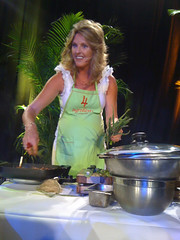Small presses and self publishers usually have a difficult time getting positive attention from Independent (Indie) bookstores. I’m going to let you in on a dirty little secret today that will help immensely.
You may know that the American Booksellers Association looks out for the interests of Indie bookstores; however, were you aware there are nine regional bookseller associations that do even more for them? For instance, my bookstore is served by the Midwest Booksellers Association (MBA). I know you’re probably wondering why I mention these. It’s because they have a marketing opportunity program that reaches all the Indie stores that are members of their respective regional organizations and get emails.
The following is a quote from an email I received from the MBA yesterday:
Reach thousands of booksellers. The Regional Bookseller Trade Associations are combining efforts to get your promotional materials, ideas, and gift items into the hands of our nearly 3,000 independent bookstore members. Entries cost $100. Each participating regional will send an email alert to our members. Payment must be made before the alert is sent. You can pay with a credit card or a check. For credit card payments call 800.331.9617, or mail your check to SIBA, 3806 Yale Ave., Columbia, SC 29205
New! Reserve your listing online: Click Here!
Email your entry to: alert@sibaweb.com exactly as you’d like it described in the alert.
Along with bookmarks & posters, there are other materials that our booksellers would like to know about, such as contests, event kits, authorless events, and other creative materials that you spend dollars on developing and shipping. This would be a Call to Action to Booksellers to request the materials that they believe will be most valuable to them. Booksellers will email you directly to request the items allowing you to capture the emails of the stores that are most interested in the materials. All requests should include any parameters you choose.
Submission guidelines are below.
See a sample Creative Advertising & Promo Alert here!
This is a great opportunity for greeting card companies and other sidelines vendors to connect with independents and to get a sample of your wares into their hands.
Here is a quote from an email to member bookstores so you can see how they are contacted:
Dear Booksellers,
Here is the latest installment of the Creative Advertising and Promo Alert, sponsored by your regional trade associations. In this email you will find a list of promotional offers from publishers, wholesalers, sideline companies and other vendors who have developed a variety of marketing tools and pieces designed to help you sell more stuff; specifically, more of their stuff!
Offers are arranged alphabetically by vendor name, but we have included a summary at the top of each listing to show the company name, the category their products fall under, and a list of the items/promotional pieces that are being offered. These are great items, not just for your own in store use, but also to give to teachers, educators and librarians.
PLEASE READ EACH LISTING CAREFULLY. They each contain specific instructions. If you are interested in a particular item, please follow the directions in the listing to request an item. DO NOT simply reply to this email, as we can not guarantee that your request will get forwarded to the proper person in time.
We hope this Creative Advertising & Promotional Alert will be useful to you, by bringing together into one place many of the resources publishers and vendors create to help encourage sales.
Yours truly,
Your Regional Booksellers Trade Association
Here is contact information for all the regionals:
Jim Dana (Executive Director)
208 Franklin St.
P.O. Box 901
Grand Haven, MI 49417
(800) 745-2460, (616) 847-2460
Fax: (616) 842-0051
E-Mail: glba@books-glba.org
Susan Walker (Executive Director)
Kati Gallagher (Assistant Director)
3407 W. 44th St.
Minneapolis, MN 55410
(800) 784-7522, (612) 926-5868
Fax: (612) 926-6657
E-Mail: susan@midwestbooksellers.org
kati@midwestbooksellers.org
Lisa Knudsen (Executive Director)
19 Old Town Square, Suite 238
Fort Collins, CO 80524
(970) 484-5856
Fax: (970) 407-1479
E-Mail: lisa@mountainsplains.org
Eileen Dengler (Executive Director)
2667 Hyacinth St.
Westbury, NY 11590
(516) 333-0681
Fax: (516) 333-0689
E-Mail: info@naiba.com
Steve Fischer (Executive Director)
297 Broadway, #212
Arlington, MA 02474
(781) 316-8894
Fax: (781) 316-2605
E-Mail: steve@neba.org
Britton Trice (Chair)
Garden District Bookshop
2727 Prytania St.
New Orleans, LA 70130
(504) 895-2266
Fax: (504) 895-0111
E-Mail: betbooks@aol.com
Hut Landon (Executive Director)
The Presidio
P.O. Box 29169 (mail)
37 Graham St. (delivery)
San Francisco, CA 94129
(415) 561-7686
Fax: (415) 561-7685
E-Mail: office@nciba.com
Thom Chambliss (Executive Director)
214 East 12th Ave.
Eugene, OR 97401-3245
(541) 683-4363
Fax: (541) 683-3910
E-Mail: info@pnba.org
Jennifer Bigelow (Executive Director)
959 E. Walnut St., Suite 220
Pasadena, CA 91106
(626) 793-7403
Fax: (626) 792-1402
E-Mail: office@scibabooks.org
Wanda Jewell (Executive Director)
Southern Independent Booksellers Alliance
3806 Yale Ave.
Columbia, SC 29205
(803) 994-9530
Fax: (803) 779-0113
E-Mail: info@sibaweb.com
If you find my posts helpful, please subscribe to my RSS feed.
This is a reprint from Bob Spear‘s Book Trends blog.

 Last weekend, I went to the
Last weekend, I went to the 


 You can order ‘Young Junius’ special edition at
You can order ‘Young Junius’ special edition at